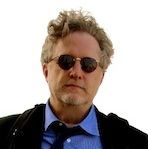Sharpen Your Swords
Recently, my wife Pam and I were at a conference focused on where contemplative wisdom and technology intersect. It was a very interesting, extraordinary experience. One of the remarkable things that went on was hearing from a number of MIT-, Harvard-, and Brown University-trained neuroscientists talk about meditation and neuroscience. As I listened, it became very apparent to me that when looking at meditation and what it does to the brain, they had not included in their model the interior, or psychological/phenomenological aspects of the experience of meditation.
My work has been based on the Integral model, and when people haven’t adopted that way of looking at things, it’s almost shocking, because in the Integral model we talk about the four quadrants: the Upper-Right quadrant, which is the objective, physical exterior, in this case the physical human brain; the Upper-Left quadrant, which represents the subjective interior dimension (thoughts, feelings, emotions) of an individual; the Lower-Left quadrant, which represents our subjective exterior (relations with others); and the Lower-Right quadrant, which is the objective exterior world around you.
So, when we look at the brain and what it does when people meditate, that gives us some really great information, but it doesn’t tell us anything about what it feels like to be engaged in an ongoing meditation practice, how things begin to shift, the states that arise―how all kinds of things happen. From looking at the brain, how it fires, where the blood goes, the electrical, magnetic, and neurochemical things going on, we gain essential and valuable information, but without the interior, subjective, phenomenological aspect, what we have learned is really reductionistic.
One scientist, who measures mindfulness using brain scanning and different techniques, was asked the question, “What is mindfulness?” And he didn’t know. He couldn’t answer that. He was just stumped. He said, “Well, it’s attention.” Okay, well, that means that almost anything would qualify as being mindful. Every time you look at something or pay attention, you’re mindful. Not necessarily. This was really interesting and I commented to him, “You need to include the interior experience, in this case what mindfulness is, of whatever you’re measuring.” And he looked at me as if to say, “Wow, that’s just brilliant.” And I was thinking, wow, that’s just Integral 101. You have to include both. You can’t reduce the one to the other.
For example, if we wanted to see what goes on in the brain of a literary genius while in the act of creating something, say if Shakespeare was around, and we could time travel, and we wanted to see his what was going on in his brain while he was writing Henry V or Romeo and Juliet, we could hook his brain up when he was in the state of creating and say, “Wow, look what’s going on in Shakespeare’s brain.”  And we could look at someone else, maybe Ernest Hemingway or J.R.R. Tolkien, while they were writing in their creative phase, and we could see their brains and see that there are commonalities when people of great literary gifts are creating literary masterpieces. This is all well and good, but it doesn’t tell us anything about what it is like to actually be in that kind of state of creative flow. We would have to really talk to Shakespeare, Hemingway, or Tolkien in order to find that out.
And we could look at someone else, maybe Ernest Hemingway or J.R.R. Tolkien, while they were writing in their creative phase, and we could see their brains and see that there are commonalities when people of great literary gifts are creating literary masterpieces. This is all well and good, but it doesn’t tell us anything about what it is like to actually be in that kind of state of creative flow. We would have to really talk to Shakespeare, Hemingway, or Tolkien in order to find that out.
You can’t reduce what goes on to only the objective, physical aspect without including the experience, just as you can’t reduce what goes on to only the experience and say there is nothing else. You need to take both sides into account―the subjective experience and the objective event. The behaviorists and B.F. Skinner tried to reduce everything to exteriors, and that was quite popular for a while in psychology. I think it actually still survives in some facets, but lost its cutting edge, game-leading aspect back in the 50s and 60s. So that was one of the interesting things that I noticed at the conference.
I had driven about 14 hours to get there and when I got to the conference, I was really tired. Here I was, beginning a 3-day conference, where there were going to be a lot of people, and lectures, and it felt pretty overwhelming. So, I set myself up at a table, put on my noise-cancelling headphones, and did Deep Euphoria (Special Edition), one of my favorite tracks, for 70 minutes. I just sat there and did it. It broke through my tiredness and all of the impressions that were building up in my interiors, and I was able to release all of that. When I finished the meditation, I was in a very open place, feeling very connected to myself and ready for whatever was going to happen. These things are in God’s hands; I just show up and try to do my best, and a lot of extraordinary things happen.
 I told Eric Thompson, who was with us the first day, my experience, and he said, “Yeah, as we go through our days, we’re like the windshields of our cars―we collect bugs, bam-bam-bam-bam.” Especially those who live in very humid climates, and especially at night, we get all kinds of insects splattering all over the windshield when we drive, and we have to clean it off in order to see clearly. In the same way, I think the daily practice of meditation helps us to see clearly. It keeps washing away the detritus of our experiences, our slights, our thoughts, and our this and that and allows us to keep being clear.
I told Eric Thompson, who was with us the first day, my experience, and he said, “Yeah, as we go through our days, we’re like the windshields of our cars―we collect bugs, bam-bam-bam-bam.” Especially those who live in very humid climates, and especially at night, we get all kinds of insects splattering all over the windshield when we drive, and we have to clean it off in order to see clearly. In the same way, I think the daily practice of meditation helps us to see clearly. It keeps washing away the detritus of our experiences, our slights, our thoughts, and our this and that and allows us to keep being clear.
Just like when I was a wilderness guide, out in the Utah wilderness in the middle of winter, we would get our water from frozen streams or ponds. Every morning, we would get up and break through the ice that had accumulated. To me, that is what a daily meditation practice is like. If we don’t do the work of breaking through the conditioned responses that build up, we become less conscious, less aware, and more conditioned. If we really want to get to the living waters of our deepest selves, the flow of inspiration, creativity, and intuitiveness, and to our spiritual natures, we just have to keep going back, every day, and break through the ice. If we neglect our practice for two or three days, or a week, well, when we get back to it, then the ice will be thicker, and we’ll need a little more rigorous effort to crack through.
Building on that, we’ve been studying the Gospel According to Thomas for about a year in our Sunday meditation group. The Gospel According to Thomas is one of the books that was found in the Egyptian desert in 1945 near the village of Nag Hammadi, called the Nag Hammadi Library or the Nag Hammadi Codex. In it are the sayings of Jesus, which many scholars now claim have come from a time or a source that is earlier than the Gospel of Mark, which was previously considered to be the earliest gospel in the New Testament. So these are very early and could be very pure and close-to-the-source quotations of Jesus. There’s no story, no crucifixions, no miracles―just somebody taking notes.
We read two verses every week. We used to read five, but these things are like kōans, or rather they are kōans, largely. Some of them you really have to struggle and sit with to understand what the heck Yeshua (Jesus) is trying to say. Last week we read a remarkable verse that has no parallel in any of the Matthew, Mark, Luke, or John scriptures. Often the verses are related to some of the things in the other gospels, but about fifty percent are brand spanking new. This is one of them. I’m paraphrasing here, but Jesus said, “If you’re going to destroy the great man, make sure your sword can pierce the wall so that your arm goes through the wall. When you can do that, then you can destroy the great man.”
Hmmm, what? What in the heck! I mean, what are you talking about, Jesus? Destroying great men? Are you talking about assassinating Caesar or something? Well, eventually it came to me, and this is strictly my interpretation, but it seems to make sense. I think that the great man, in this case, is our own faults, identified ego structures, and all of our conditioning. So, when we’re getting ready to do the work, we have to make sure that we have the acuity to pierce through the walls of our ego structures and our self-limitations. This can’t be a merely intellectual deconstruction; we have to have practices that will help us pierce the walls of our false selves and of the boundaries that we have structured around ourselves, and the stories that go with them. Once we have the practice, and we know we can pierce the wall with our sword, with the sword of spirit or the sword of insight, then we’re ready to take on our ego structure. This seems pretty inspiring to me.
I think that with the Profound Meditation Program and our practice, and maybe a bit of skillful knowledge about meditation and doing shadow work, that we have a very, very sharp, effective sword that generations before us have not had access to. I think we can use this type of technology and practice to do the kind of work that Jesus was talking about all through the Gospel According to Thomas. The picture of Jesus that emerges is that he was a master of transformation. He was trying to get us to wake up to who and what we really are and what the true nature of reality is, which, according to Him, is spirit. It is God, it is alive, and we are that.
___________________________________________________________________________
Adapted from iAwake Technologies’ free, weekly teleconference call on August 15, 2012.
___________________________________________________________________________
 John Dupuy is the CEO of iAwake Technologies and the founder of Integral Recovery, a holistic addiction treatment approach inspired by Ken Wilber’s Integral Model. He is also the author of Integral Recovery: A Revolutionary Approach to Alcoholism and Addiction, recently published by SUNY Press. As a pioneer in the use of brainwave entrainment in therapy and personal development, John has dedicated his life to helping others deepen their spiritual practice and transform their lives.
John Dupuy is the CEO of iAwake Technologies and the founder of Integral Recovery, a holistic addiction treatment approach inspired by Ken Wilber’s Integral Model. He is also the author of Integral Recovery: A Revolutionary Approach to Alcoholism and Addiction, recently published by SUNY Press. As a pioneer in the use of brainwave entrainment in therapy and personal development, John has dedicated his life to helping others deepen their spiritual practice and transform their lives.
___________________________________________________________________________
Leave a Comment
You must be logged in to post a comment.


Leave your comments below